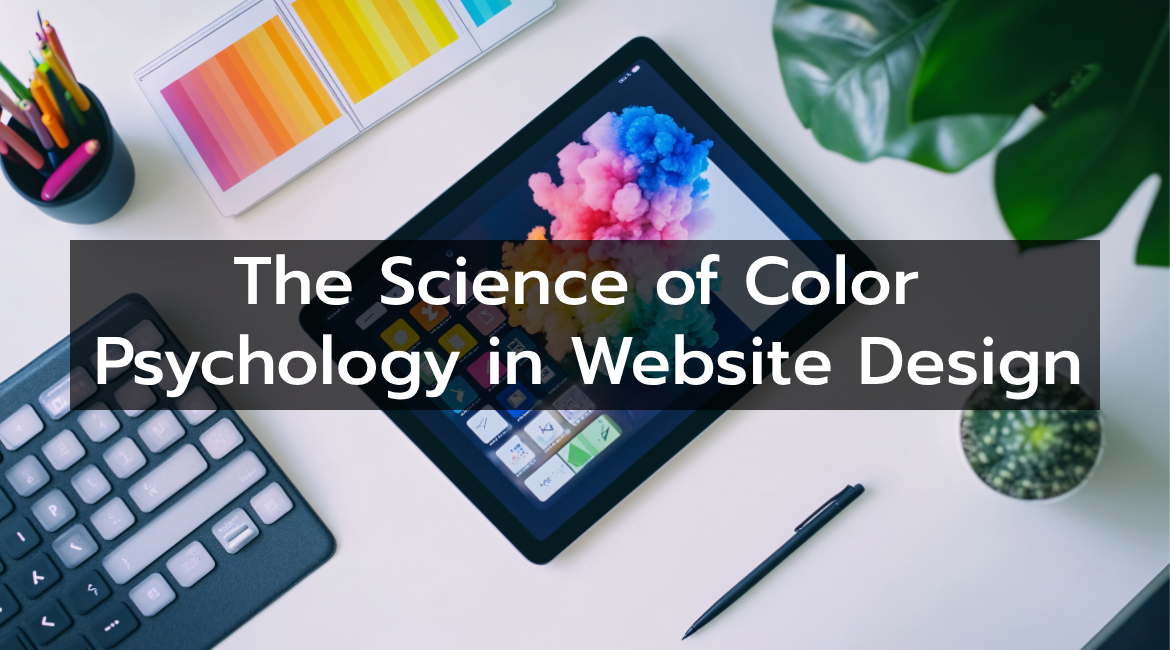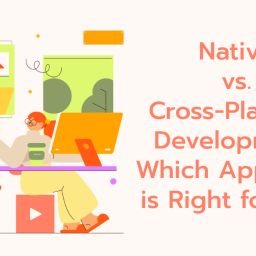The Science of Color Psychology in Website Design
Wikipedia defines color psychology as ‘study of colors and hues as a determinant of human behavior’. Color influences our emotions, decisions and our perceptions even where it shouldn’t, for example the taste of food. This theory even extends to the digital space, where a website is designed keeping in mind how users will react to its color schemes. A perfectly designed website not only showcases the product, service and functionality but also takes the user on an emotional journey. In the field of UI/UX or front-end web development having a good understanding of color psychology is absolutely crucial.
This article dives deep into the science of color psychology and its role in designing engaging, intuitive, and aesthetically pleasing front end of websites.
The Fundamentals of Color Psychology
Colors are not just visual elements, they are powerful influencers of human feelings and can strongly affect decision making. For example, when you are browsing through clothes in a department store, it takes barely a second to reject a shirt based upon just its color. Studies have shown that people form a subconscious judgement about any product in the first time they view it and 90% of the judgement is influenced by the color of that product.
Different colors evoke different emotions and having this knowledge as an UI/UX designer, you have can take your websites to the next level.
Common Color Associations:
Red: Associated with passion, energy, and urgency. It’s often used in e-commerce for sales and promotions.
Blue: Symbolizes trust, reliability, and calmness. It’s a popular choice for industries like finance and healthcare.
Green: Represents nature, growth, and health. It works well for eco-friendly brands and wellness websites.
Yellow: Conveys optimism and warmth but should be used sparingly as it can be overwhelming.
Purple: Suggests luxury, creativity, and mystery. Often seen in beauty and premium product sites.
Orange: Combines the energy of red and the cheerfulness of yellow, making it great for calls to action (CTAs).
Black: Denotes sophistication and power, commonly used in luxury brands.
Color Psychology in UI/UX
The role of color in UI/UX design is not only to make the website attractive, but it enhances its overall experience and also guides how the user interacts with it. The following terms illustrate how colors affect UI/UX:
Visual Hierarchy
Colors help guide the focus of the users of important elements like buttons and sidebars. For example, a CTA button with a bright color on a neutral background prompts the user to take actions.
Brand Identity
Color of the website also showcases the brand colors. Hence, the color of the front end of your website and color of the brand’s logo go hand-in-hand. Hence, the logo of your brand should be designed keeping color psychology in mind.
Emotionally Engaged Users
Colors are often used to drive behavior. For example, for a blog page, blue is a very good color since it imparts a sense of calm and urges the user to stay on the website, whereas a checkout page might be benefited by some strong shade of red which urges the user to take fast actions.
Accessibility
The color scheme of your website also affects its readability. Striking the perfect contrast of minimal colors usually results in the best websites. Using too much colors distracts the user and this might lead to increased dropout rate.
How to Apply Color Psychology in Website Design
Define Your Target Audience
Understanding your audience is crucial, your website should resonate with your target audience. For example, fitness brands have their main audience as young adults and hence should use colors like yellow and orange to convey energy. Whereas financial companies mostly cater to people in their thirties and they usually prefer hues of blue to create a sense of calm.Create a Balanced Palette
A well-designed palette typically includes:Primary Colors: Prominent colors showcasing the brand.
Secondary Colors: Colors complimenting the primary colors to create meaningful contrast.
Neutral Colors: To depict empty space, elements etc.
Test and Iterate
Different group of audiences react to different set of colors. A/B testing using support groups are very helpful in such cases.
Challenges in Using Color Psychology
Despite its benefits, applying color psychology comes with challenges:
Subjectivity: Color perception although catering to majority of population can sometimes vary due to political, cultural or religious reasons.
Overuse: Number of colors is a double-edged sword. Too many can overwhelm the user while using minimum color can render the website as too simple.
Tools for Perfecting Your Color Scheme
Several tools simplify the process of creating and implementing effective color schemes:
Adobe Color: For curating well-structured color palates.
Coolors: A user-friendly tool for generating, creating and tweaking palates.
ColorZilla: A browser extension for identify hex codes of colors.
Contrast Checkers: Ensure your designs are accessible to all users.
Conclusion
Color is like the silent force guiding a user thorough a website design. By understanding the major principles of color psychology, you can influence the decisions of your user, its emotions and urge him/her to make decisions. For professionals in UI/UX, front-end development, and web development, having a good grasp of color psychology is what might make them great from just good. Whether you are designing a complex e-commerce website or just a simple blog page, color is a perfect guide to a deep immersive digital experience.







